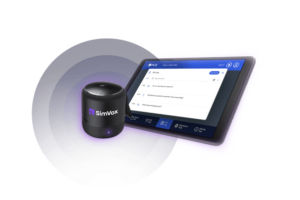neosim
Founded by Swiss clinical experts with a strong background in lung physiology and mechanical ventilation, neosim was built on the principles of developing simulators that have autonomous physiology. These simulators are based on published scientific data and are as close to reality as possible. The company’s mission is to save lives from day one by using these autonomous simulators. For the training and education of clinicians, especially respiratory therapists and intensive care professionals, neosim simulators create realistic breathing in health and disease.
The company sought to create autonomous human lung simulators-real-time artificial intelligence for high-quality respiratory therapy training and education. The goal was to provide clinical training on mechanical ventilation for hospitals, simulation centers, and universities. Thus, the design support and testing of respiratory devices for manufacturers, test-houses, and biomedical engineering all kept in mind quality assurance for hospitals and manufacturers of respiratory care devices.
Ultimately, autonomous human lung simulators allow learners to accurately follow the actions of the ventilator and gain an understanding of the dynamics of closed-loop control as if there was a patient – but without harming a patient. Additionally, autonomous human lung simulators allow clinicians to expose the workings of their intensive care ventilators and respiratory support devices – and to improve the management of patients, according to neosim.
Sponsored Content:
The company adds that neosim’s simulators can be treated with intensive care therapy methods and are equipped and respond autonomously like a real human patient. The results manifest themselves clinically and can be measured quantitatively with state-of-the-art monitoring in real time.
LuSi
LuSi, neosim’s Neonatal Lung Simulator, is the world’s first autonomous and advanced baby lung simulator with real-time artificial intelligence. The product is designed to train clinicians in the assessment of pulmonary function and respond to treatment without operator’s intervention. In doing so, the product can simulate pathologies like RDS, lung collapse, weak muscular activity, pneumothorax, airway obstruction, etc.
LuSi responds to treatment without operator intervention and can simulate pathologies like RDS, lung collapse, weak muscular activity, pneumothorax, airway obstruction, etc. The product models are based on scientific literature and can represent lung volume, breathing pattern, and ventilation inhomogeneity in preterm and term infants. More than 60 parameters govern the physiology of LuSi. Further, physiological gas exchange models can be made automatic or operator-determined.
LuSi is shipped in a flight case ready to be used in the hospital setting or out-of-hospital in any training facility because the product does not need CO2 gas nor actual monitoring equipment. The vital signs parameters are calculated based on actual measured values such as pressure, flow, and volume plus case-specific pathologies like dead space, CO2 production, and lung compliance.
Sponsored Content:
LuSi comes plug-and-play including the baby, built-in rechargeable batteries, battery charger, storage bag, technical support material, and the PC-based case-building and execution software LuSiLIFE with integrated vital signs display. Optionally, any size external monitor can be added to display vital signs.
Users can access a scenario library manager to edit, run and add clinical simulation scenarios. They can also add pictures and colors for easy selection and recognition. All design and selection of pathologies is controlled by LuSiLIFE, a touch-screen-enabled pathology building and execution program. This includes the execution of pre-assembled cases, loading of patient case libraries, on-the-fly changes, notes-taking, and complete data recording for later analysis.
Click Here to Connect to Leading Healthcare Simulation Vendors Like neosim
The Vital Signs Monitor window can be used to display the results of treatment in real time. They include pre-ductal and arterial pulse oximetry. Users can then configure the monitor to match the device of their unit. They can also modify technical features of monitors, for example, the rise time of capnometry, to teach potential and limitations for use in neonates.
The windows based scenario building and editing software LuSiLIFE runs on almost all laptops and communicates with LuSi via Bluetooth. Wireless operation makes LuSi completely tetherless and independent for hours of operation.
TestChest
TestChest is an innovative full physiologic artificial lung that provides a breakthrough in mechanical ventilation training. The product was developed to simulate the human heart and respiratory system for teaching and training purposes. TestChest can be used either as a stand-alone skill training station or integrated into a full-scale patient simulator.
TestChest is a universal simulator that can be connected to all ventilators, for intubated patients as well as mask ventilation. All modalities are possible: pressure-volume maneuvers, recruitment, PEEP adjustment, expiratory trigger sensitivity, pressure control, assist control, volume control, SIMV, PAV, adjustment, APRV, PSV, CPAP, PRVC, ASV, Intelligent, and all other modalities. According to neosim, a few applications of respiratory therapy without risk to patients include:
Lung Mechanics
- Programmable airway resistance
- Programmable total compliance and chest wall compliance
- Non-linear Pv curves
- Make the lungs recruitable or non-recruitable
Respiratory Control
- Choose from a variety of different spontaneous breathing patterns or create your own
- Programmable inspiratory effort
Haemodynamics
- Change cardiac output
- Create true shunt To create persistent pulmonary hypertension for real-time display of heart-lung interactions
Gas Exchange
- Change work of breathing
- Programmable diffusion factor
- Programmable dead space
- Programmable O2 dissociation curve
- Create metabolic alkalosis or acidosis
Special Effects
- Add leaks
Overall, LuSi and TestChest create interactive outcomes without operator intervention because of the integrated physiological models and autonomous operation. neosim AG is proud to be a partner of the European Society of Pediatric and Neonatal Intensive Care ESPNIC. Learn more by reading the articles below or on the neosim website.
neosim Simulation Education Latest News

Neonatal Lung Simulator LuSi from neosim Creates Realistic Pediatric Ventilator Training

IMSH 2023 Vendor Demos: Avkin, TacMed Solutions, Surgical Science, sim2grow, Echo Healthcare, and Nasco Healthcare
Sponsored Content:
















